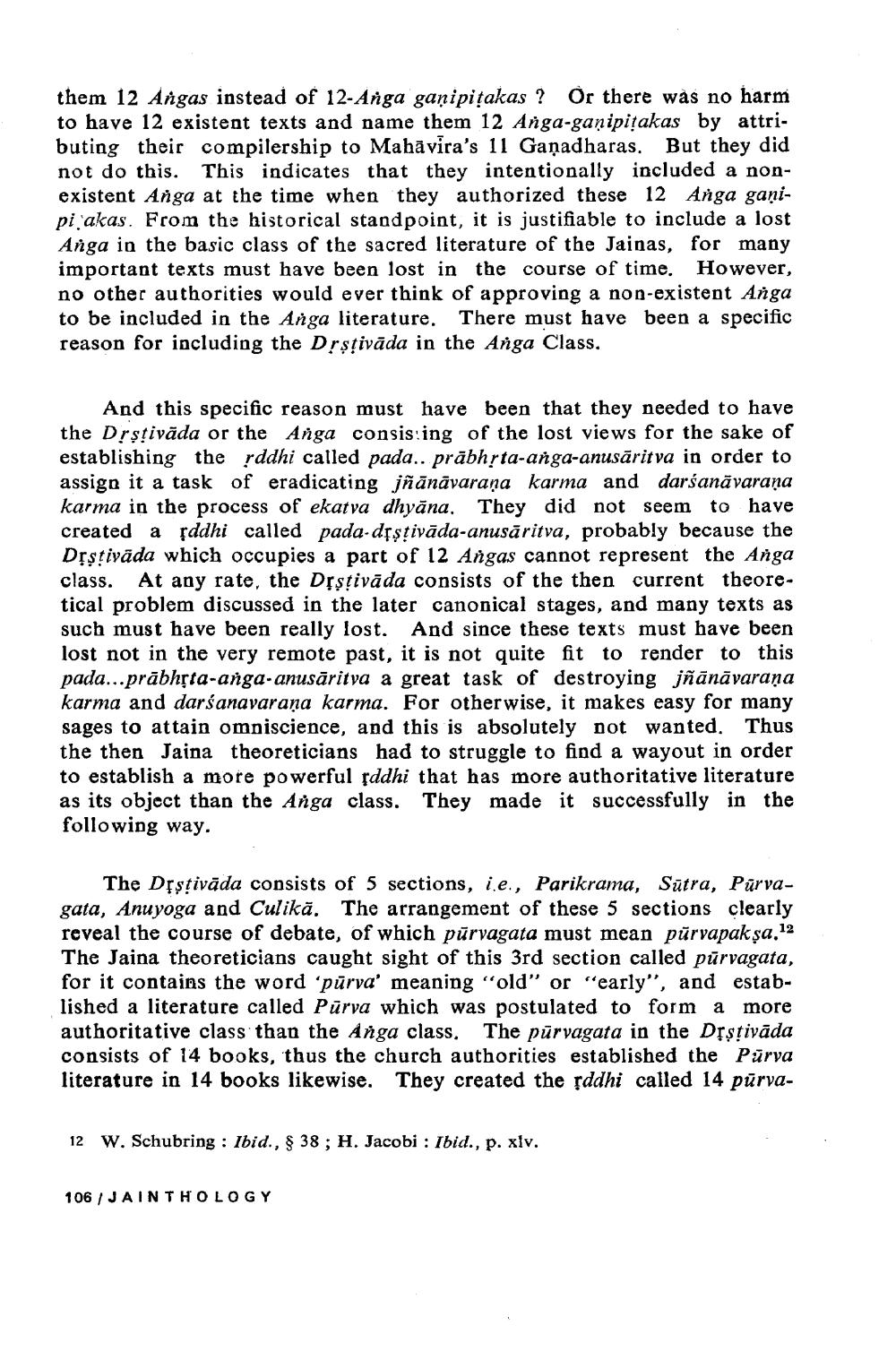________________
them 12 Angas instead of 12-Anga ganipiṭakas? Ör there was no harm to have 12 existent texts and name them 12 Anga-ganipitakas by attributing their compilership to Mahavira's 11 Ganadharas. But they did not do this. This indicates that they intentionally included a nonexistent Anga at the time when they authorized these 12 Anga gaṇipi akas. From the historical standpoint, it is justifiable to include a lost Anga in the basic class of the sacred literature of the Jainas, for many important texts must have been lost in the course of time. However, no other authorities would ever think of approving a non-existent Anga to be included in the Anga literature. There must have been a specific reason for including the Dṛṣṭivāda in the Anga Class.
And this specific reason must have been that they needed to have the Dṛṣṭivada or the Anga consisting of the lost views for the sake of establishing the rddhi called pada.. prābhṛta-anga-anusăritva in order to assign it a task of eradicating jñānāvarana karma and darśanavaraṇa karma in the process of ekatva dhyāna. They did not seem to have created a rddhi called pada-dṛṣṭivāda-anusāritva, probably because the Dṛṣṭivada which occupies a part of 12 Angas cannot represent the Anga class. At any rate, the Dṛṣṭivada consists of the then current theoretical problem discussed in the later canonical stages, and many texts as such must have been really lost. And since these texts must have been lost not in the very remote past, it is not quite fit to render to this pada...prabhṛta-anga-anusāritva a great task of destroying jñānāvaraṇa karma and darśanavarana karma. For otherwise, it makes easy for many sages to attain omniscience, and this is absolutely not wanted. Thus the then Jaina theoreticians had to struggle to find a wayout in order to establish a more powerful rddhi that has more authoritative literature as its object than the Anga class. They made it successfully in the following way.
The Dṛṣṭivada consists of 5 sections, ie., Parikrama, Sutra, Purvagata, Anuyoga and Culika. The arrangement of these 5 sections clearly reveal the course of debate, of which purvagata must mean purvapakṣa." 12 The Jaina theoreticians caught sight of this 3rd section called pūrvagata, for it contains the word 'pūrva' meaning "old" or "early", and established a literature called Purva which was postulated to form a more authoritative class than the Anga class. The purvagata in the Dṛṣṭivāda consists of 14 books, thus the church authorities established the Purva literature in 14 books likewise. They created the rddhi called 14 pūrva
12 W. Schubring: Ibid., § 38; H. Jacobi : Ibid., p. xlv.
106/JAINTHOLOGY




